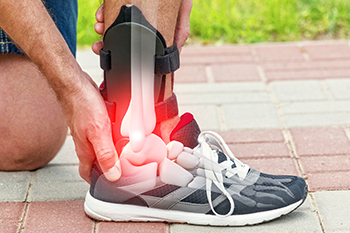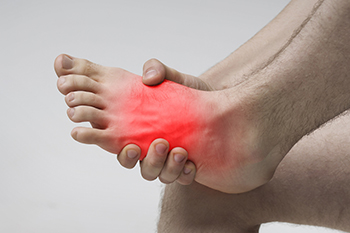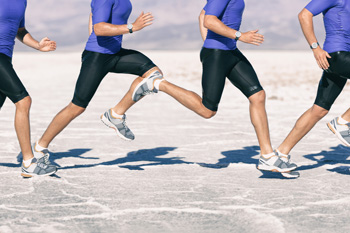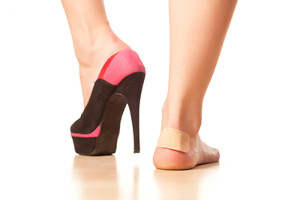Blog
Items filtered by date: January 2024
Choosing the Right Ankle Brace

Selecting the appropriate ankle brace is akin to navigating a complex landscape, especially given the diverse needs of athletes. Ankle injuries demand tailored solutions, and understanding the attributes of each brace type is important. Sleeves, while the least stable, offer comfort and are suitable for first-line treatment. Straps, popular among athletes, involve cloth straps that create a heel-lock figure-eight, yet their complexity can lead to adherence issues. Stirrups, popular in the 90s, now find use in splints and controlled ankle motion. Lace-ups, the original stable design, have evolved with improvements in functionality and comfort. Hybrid braces, combining features of sleeves, straps, stirrups, and lace-ups, offer both comfort and stability, but come at a higher cost. The choice among these types depends on factors such as the athlete's position, preferences, and the specific injury or condition being addressed. It is suggested that you schedule an appointment with a podiatrist to find the most suitable brace for you.
Ankle and foot injuries are common among athletes and in many sports. They can be caused by several problems and may be potentially serious. If you are feeling pain or think you were injured in a sporting event or when exercising, consult with Stephanie Tine, DPM from Flamingo Foot and Ankle. Our doctor will assess your condition and provide you with quality foot and ankle treatment.
Common Injuries
The most common injuries that occur in sporting activities include:
- Achilles Tendonitis
- Achilles Tendon Rupture
- Ankle Sprains
- Broken Foot
- Plantar Fasciitis
- Stress Fractures
- Turf Toe
Symptoms
Symptoms vary depending upon the injury and in some cases, there may be no symptoms at all. However, in most cases, some form of symptom is experienced. Pain, aching, burning, bruising, tenderness, tightness or stiffness, sensation loss, difficulty moving, and swelling are the most common symptoms.
Treatment
Just as symptoms vary depending upon the injury, so do treatment options. A common treatment method is known as the RICE method. This method involves rest, applying ice, compression and elevating the afflicted foot or ankle. If the injury appears to be more serious, surgery might be required, such as arthroscopic or reconstructive surgery. Lastly, rehabilitation or therapy might be needed to gain full functionality in the afflicted area. Any discomfort experienced by an athlete must be evaluated by a licensed, reputable medical professional.
If you have any questions, please feel free to contact our office located in Fort Lauderdale, FL . We offer the newest diagnostic and treatment technologies for all your foot care needs.
Gout Pain Can Be Managed
Causes of Cuboid Syndrome

Cuboid syndrome is a condition resulting from joint and ligament injury surrounding the cuboid bone, one of the foot's seven tarsal bones. It causes lateral foot pain, often around the middle of the foot or at the base of the 4th and 5th toes. Diagnosis is challenging due to its non-specific symptoms and for that reason cuboid syndrome can be mistaken for stress fractures. A podiatrist will rely on a physical exam and medical history, as imaging may not always reveal cuboid syndrome. This condition occurs when the cuboid bone partially dislocates, typically due to sudden injury or overuse, common among athletes and dancers. Symptoms include lateral foot pain worsened by weight-bearing, limited mobility, and possible swelling. Causes include overuse, ankle sprains, pronated feet, rapid side-to-side movements, poorly fitting shoes, and inadequate rest. Treatment involves rest, elevation, compression and professional manipulations such as the cuboid whip or squeeze. If you have chronic foot pain, it is strongly suggested that you schedule an appointment with a podiatrist to uncover the cause and offer appropriate treatment.
Cuboid syndrome, also known as cuboid subluxation, occurs when the joints and ligaments near the cuboid bone in the foot become torn. If you have cuboid syndrome, consult with Stephanie Tine, DPM from Flamingo Foot and Ankle. Our doctor will assess your condition and provide you with quality foot and ankle treatment.
Cuboid syndrome is a common cause of lateral foot pain, which is pain on the outside of the foot. The condition may happen suddenly due to an ankle sprain, or it may develop slowly overtime from repetitive tension through the bone and surrounding structures.
Causes
The most common causes of cuboid syndrome include:
- Injury – The most common cause of this ailment is an ankle sprain.
- Repetitive Strain – Tension placed through the peroneus longus muscle from repetitive activities such as jumping and running may cause excessive traction on the bone causing it to sublux.
- Altered Foot Biomechanics – Most people suffering from cuboid subluxation have flat feet.
Symptoms
A common symptom of cuboid syndrome is pain along the outside of the foot which can be felt in the ankle and toes. This pain may create walking difficulties and may cause those with the condition to walk with a limp.
Diagnosis
Diagnosis of cuboid syndrome is often difficult, and it is often misdiagnosed. X-rays, MRIs and CT scans often fail to properly show the cuboid subluxation. Although there isn’t a specific test used to diagnose cuboid syndrome, your podiatrist will usually check if pain is felt while pressing firmly on the cuboid bone of your foot.
Treatment
Just as the range of causes varies widely, so do treatments. Some more common treatments are ice therapy, rest, exercise, taping, and orthotics.
If you have any questions, please feel free to contact our office located in Fort Lauderdale, FL . We offer the newest diagnostic and treatment technologies for all your foot care needs.
Assessing Foot Biomechanics

Foot assessment is a common practice in podiatry where podiatrists classify foot types and detect potential causes of foot-related issues. This helps in understanding foot structure and its connection to injuries or problems. In podiatry, different methods are used to assess foot structure, including visual observation, measurements, and tests. These methods help podiatrists identify if someone has a high arch, neutral foot, or a low arch, among other classifications. One useful tool is the foot posture index, which helps assess foot pronation or supination. It is a simple system where the podiatrist observes and scores different aspects of foot posture. Podiatrists also use static biomechanical measures, like arch angles, foot range of motion, and joint alignments, to evaluate a patient's foot condition. These measures provide valuable information about arch height, posture, and how the foot moves. These assessments are vital for diagnosing foot problems, prescribing treatments, and designing custom orthotics or footwear to improve a patient's foot health. If you are having foot problems, it is suggested that you schedule an appointment with a podiatrist for a biomechanical assessment, diagnosis, and treatment.
If you have any concerns about your feet, contact Stephanie Tine, DPM from Flamingo Foot and Ankle. Our doctor can provide the care you need to keep you pain-free and on your feet.
Biomechanics in Podiatry
Podiatric biomechanics is a particular sector of specialty podiatry with licensed practitioners who are trained to diagnose and treat conditions affecting the foot, ankle and lower leg. Biomechanics deals with the forces that act against the body, causing an interference with the biological structures. It focuses on the movement of the ankle, the foot and the forces that interact with them.
A History of Biomechanics
- Biomechanics dates back to the BC era in Egypt where evidence of professional foot care has been recorded.
- In 1974, biomechanics gained a higher profile from the studies of Merton Root, who claimed that by changing or controlling the forces between the ankle and the foot, corrections or conditions could be implemented to gain strength and coordination in the area.
Modern technological improvements are based on past theories and therapeutic processes that provide a better understanding of podiatric concepts for biomechanics. Computers can provide accurate information about the forces and patterns of the feet and lower legs.
Understanding biomechanics of the feet can help improve and eliminate pain, stopping further stress to the foot.
If you have any questions please feel free to contact our office located in Fort Lauderdale, FL . We offer the newest diagnostic and treatment technologies for all your foot and ankle needs.
High Heels and Their Impact on Foot Posture

High heels, synonymous with style and sophistication, often come at a cost to foot health, profoundly influencing foot posture. The elevated heel forces a redistribution of body weight, prompting a forward tilt of the pelvis and altering the natural curvature of the spine. This shift places increased pressure on the balls of the feet, and may lead to conditions such as metatarsalgia, characterized by pain and inflammation in the front part of the foot. The Achilles tendon undergoes increased tension, potentially causing tightness and discomfort. Prolonged wear of high heels can contribute to the shortening of the calf muscles, limiting flexibility and disrupting the overall biomechanics of the foot. Ankle instability and a higher risk of sprains are also associated with frequent high heel use. Understanding the impact of high heels on foot posture emphasizes the importance of moderation and the occasional choice of comfortable footwear to maintain optimal foot health. If you are experiencing foot pain brought about by wearing high heels, it is suggested that you confer with a podiatrist for treatment options.
High heels have a history of causing foot and ankle problems. If you have any concerns about your feet or ankles, contact Stephanie Tine, DPM from Flamingo Foot and Ankle. Our doctor can provide the care you need to keep you pain-free and on your feet.
Effects of High Heels on the Feet
High heels are popular shoes among women because of their many styles and societal appeal. Despite this, high heels can still cause many health problems if worn too frequently.
Which Parts of My Body Will Be Affected by High Heels?
- Ankle Joints
- Achilles Tendon – May shorten and stiffen with prolonged wear
- Balls of the Feet
- Knees – Heels cause the knees to bend constantly, creating stress on them
- Back – They decrease the spine’s ability to absorb shock, which may lead to back pain. The vertebrae of the lower back may compress.
What Kinds of Foot Problems Can Develop from Wearing High Heels?
- Corns
- Calluses
- Hammertoe
- Bunions
- Morton’s Neuroma
- Plantar Fasciitis
How Can I Still Wear High Heels and Maintain Foot Health?
If you want to wear high heeled shoes, make sure that you are not wearing them every day, as this will help prevent long term physical problems. Try wearing thicker heels as opposed to stilettos to distribute weight more evenly across the feet. Always make sure you are wearing the proper shoes for the right occasion, such as sneakers for exercising. If you walk to work, try carrying your heels with you and changing into them once you arrive at work. Adding inserts to your heels can help cushion your feet and absorb shock. Full foot inserts or metatarsal pads are available.
If you have any questions please feel free to contact our office located in Fort Lauderdale, FL . We offer the newest diagnostic and treatment technologies for all your foot and ankle needs.
Causes and Symptoms of Ankle Sprains

Ankle sprains, a prevalent issue, often occur unexpectedly during everyday activities or dynamic pursuits, like sports. The injury typically results from sudden twists or impacts on the foot, causing the tearing of ligaments. In severe cases, a distinctive popping sound or sensation may accompany the tearing of ligaments, serving as a clear indicator of an ankle sprain. Activities such as walking on an uneven surface or stepping off a curb may result in a sprained ankle. Engaging in sports with abrupt movements, like basketball, tennis, football, soccer, and trail running, heighten the risk of ankle sprains. Pain is a common symptom of a sprain, varying in intensity from mild discomfort to intense throbbing. Tenderness around the affected area indicates inflammation and potential ligament damage. Swelling is a natural response to injury, and managing it promptly can aid in reducing overall discomfort. Individuals with sprained ankles may also experience a sense of instability or weakness in the affected ankle, making weight-bearing challenging. Additionally, bruising may occur as blood vessels break due to the injury, leading to discoloration around the affected area. If an ankle sprain is suspected, it is suggested that you make an immediate appointment with a podiatrist for a thorough exam, which may include imaging tests, and an appropriate treatment plan.
Ankle sprains are common but need immediate attention. If you need your feet checked, contact Stephanie Tine, DPM from Flamingo Foot and Ankle. Our doctor can provide the care you need to keep you pain-free and on your feet.
How Does an Ankle Sprain Occur?
Ankle sprains take place when the ligaments in your ankle are torn or stretched beyond their limits. There are multiple ways that the ankle can become injured, including twisting or rolling over onto your ankle, putting undue stress on it, or causing trauma to the ankle itself.
What Are the Symptoms?
- Mild to moderate bruising
- Limited mobility
- Swelling
- Discoloration of the skin (depending on severity)
Preventing a Sprain
- Wearing appropriate shoes for the occasion
- Stretching before exercises and sports
- Knowing your limits
Treatment of a Sprain
Treatment of a sprain depends on the severity. Many times, people are told to rest and remain off their feet completely, while others are given an air cast. If the sprain is very severe, surgery may be required.
If you have suffered an ankle sprain previously, you may want to consider additional support such as a brace and regular exercises to strengthen the ankle.
If you have any questions please feel free to contact our office located in Fort Lauderdale, FL . We offer the newest diagnostic and treatment technologies for all your foot and ankle needs.
Blog Archives
- August 2025
- July 2025
- June 2025
- May 2025
- April 2025
- March 2025
- February 2025
- January 2025
- December 2024
- November 2024
- October 2024
- September 2024
- August 2024
- July 2024
- June 2024
- May 2024
- April 2024
- March 2024
- February 2024
- January 2024
- December 2023
- November 2023
- October 2023
- September 2023
- August 2023
- July 2023
- June 2023
- May 2023
- April 2023
- March 2023
- February 2023
- January 2023
- December 2022
- November 2022
